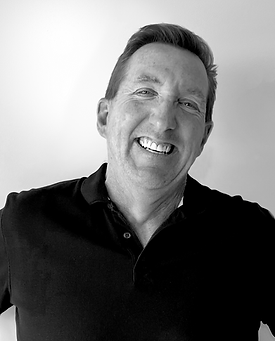
about us
WentzDesign is a youthful, energetic architecture firm which strives to deliver beautiful, creative, and functional solutions for our clients. Our focus is full service custom residential design and development planning, but we also serve many repeat clients within the commercial markets.
Our architecture firm's philosophy is built around client-driven goals and their unique personalities. While we dive into each project with enthusiasm and pride, we ultimately work within budget to satisfy each clients specific needs and dreams. We believe each project is an exciting and fun opportunity to collaborate, innovate, learn, craft, and deliver great spaces.
catered to you
No two projects are the same. We work with you to tailor our deliverables specific to your needs.
X
site analysis
feasibility drawings
LEED design
new homes
additions
interior achitecture
historical renovations
3D models
renderings
kitchen remodel
pool house
outdoor living
restaurants
permits
X
X
walkthrough video
construction drawings
variance application
interior solutions
office spaces
master plans
emotional support
our process
Send us an email or call. The initial meeting is on us! From there you will receive a personalized proposal outlining all you need to know in order to start your project.
design
We'll collaborate with you to create full architectural drawing sets and renderings to showcase your new bespoke space.
construction
Ready to go?
Let us handle the construction documents and permits so you can start building.
finish
Time to move in!
After months of preparation and anticipation, it's time to call your new space home.
your dream team


Mike Wentz, AIA
Principal / Owner
BArch, University of Cincinnati, 1991
Mike has more than 25 years of residential and commercial architectural design experience in Cincinnati. After years of "working for the man" in the corporate sector juggling commercial and residential projects, he took the leap and formed WentzDesign in 2004, fulfilling a lifelong dream of running a collaborative design firm focused on over-serving clients with thoughtful and creative solutions. Outside of the office, Mike enjoys relaxing with the family at the lake and of course the annual boys snowboarding trip out west.


Allisen McManis
Project + Office Manager
BS. in Architecture from DAAP at the University of Cincinnati.


Emily Ecklar
Project Manager
BS. in Architecture from DAAP at the University of Cincinnati.


Amy Schigel
Project Manager
BS. in Industrial Design from DAAP at the University of Cincinnati.


Kelsey Bendel
Project Manager
BS. in Architectural Engineering at University of Cincinnati.
green building
Every building should strive to be green, especially homes as they promote a healthy lifestyle and are the most important building in our lives. Green building is the practice of creating homes out of materials that are environmentally responsible, using processes that create a resource-efficient home.
A green home, also known as "sustainable" or "high-performance", is a highly efficient home. It is built with products that are better for the environment such as recycled counter tops and composite decking. Such products and processes also extend into lighting and plumbing to minimize the consumption of water, energy, and natural resources, thus lowering utility bills.
What are the benefits to building a green home?
Green homes create value. Built to be energy-efficient, they can comfortably be heated and cooled with minimal energy usage. Green homes are increasingly more desirable, more than half of consumers rank green and energy efficiency as top requirements for their next home. They can be built for the same cost - and sometimes less than - conventional homes. Green homes sell at higher prices and faster than comparable, conventional homes.
Green homes are growing. It is estimated that by 2018, the green, singly-family housing market will represent about 40 percent of the market, and 84 percent of all residential construction will have sustainable features.
Green homes are healthier and safer. The Environmental Protection Agency estimates that indoor air is two to ten times more polluted than outdoor air. LEED-certified homes are designed to maximize indoor air quality and minimize exposure to airborne toxins and pollutants.
Ask us for more information or visit www.greenhomeguide.com.


LEED certification
LEED, or Leadership in Energy and Environment Design is a certification process that was developed by the U.S. Green Building Council (USGBC) to certify green homes. LEED-certified buildings are resource efficient. They use less water and energy and reduce greenhouse gas emissions. As an added bonus, they save money. LEED works for all buildings. In particular, LEED for homes is available for building design and construction projects for single family homes and multifamily projects up to eight stories. LEED homes can quality for discounted insurance, tax breaks, and other incentives. LEED details code that all parties in all stages of the design process - architects, builders, developers, and subcontractors will follow.
There are four levels of LEED certification. As a project is built it is awarded points that then lead to its certified, silver, gold, or platinum status.
Nine key areas laid out by the USGBC and measured by LEED:
Sustainable Sites
Water Efficiency
Energy and Atmosphere
Materials and Resources
Indoor Environmental Quality
Location and Linkages
Awareness and Education
Innovation and Design
Regional Priority
According to the City of Cincinnati: the LEED-CRA residential tax abatement is a real property tax exemption offered for both new construction and renovation of residential space, constructed according to green standards and located within the City of Cincinnati. To be eligible projects must receive LEED certification from the USGBC. Consult the City of Cincinnati's Community Development offices for more information.
A home can be considered a Green Home, but not LEED-certified. We support our clients in any path they choose when designing their dream home. To find out more information about the process of certification visit www.leed.usgbc.org/homes.
